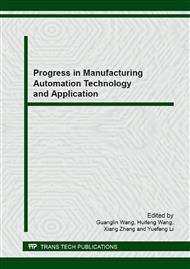p.21
p.25
p.30
p.35
p.41
p.46
p.52
p.56
p.61
Analysis on Charge and Discharge Mechanism of the Modified Lithium Iron Phosphate Positive Material
Abstract:
Along with the thorough research of lithium ion battery, the lithium iron phosphate with the peridot structure becomes a new higher energy power battery anode material. But the charge and discharge mechanism of the modified lithium iron phosphate positive material did not get the unity understanding. In this paper, the carbon coating modification, metal ion doping, particle surfaces coated iron-phosphorus phase network and the nanoparticles of lithium iron phosphate were analyzed from the modified microstructure of the lithium ion phosphate batteries, so as to get the charge and discharge mechanism is the results of the active atoms and lithium ion embedded in the grid work and emergence in the layer structure, leading to the energy changes in lithium iron phosphate microstructure.
Info:
Periodical:
Pages:
41-45
Citation:
Online since:
September 2013
Authors:
Price:
Сopyright:
© 2014 Trans Tech Publications Ltd. All Rights Reserved
Share:
Citation:


